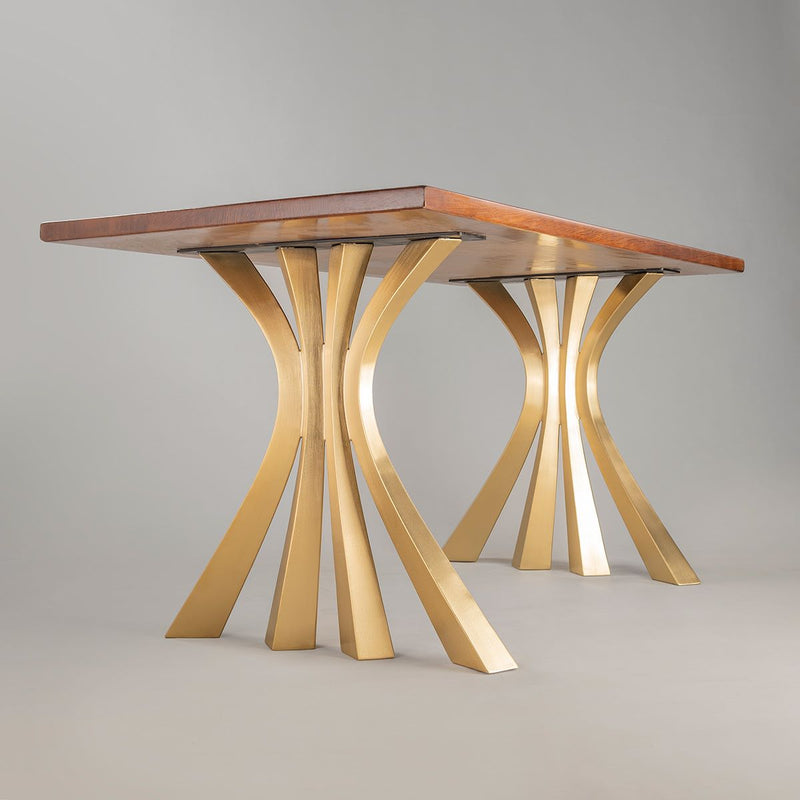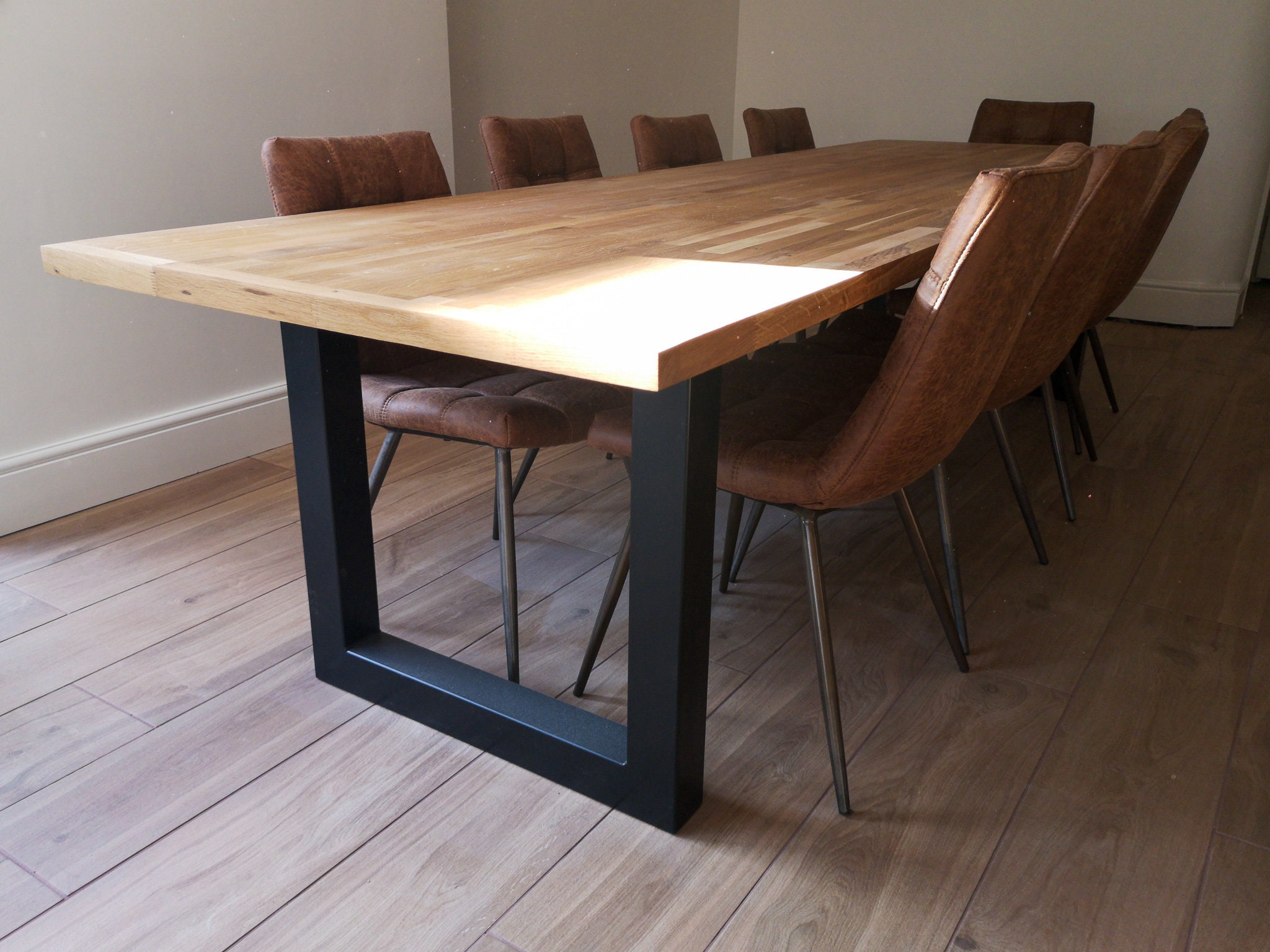Dining Room Table Legs: What to Think about Before You Get
Dining Room Table Legs: What to Think about Before You Get
Blog Article
Picking the Perfect Table: What Styles Job Best for Your Home?
Picking the perfect eating table for your home can be a nuanced process that balances looks and functionality. To navigate these selections effectively and find a table that genuinely complements your home, think about the adhering to facets in detail.
Evaluating Your Area
Reviewing the measurements and layout of your eating location is a vital very first step in selecting the perfect table. Begin by determining the size and size of the area, accounting for doorways, windows, and other architectural features that could affect table placement. This ensures that your table not just fits but also permits comfortable movement around it.
Think about the variety of individuals you commonly delight. A table should suit your household's daily demands while providing adequate versatility for occasional guests. Generally of thumb, assign at least 24 inches of table size per individual to make certain a comfy eating experience.
It's likewise important to preserve appropriate clearance around the table. Preferably, there need to go to the very least 36 inches in between the table edge and walls or various other furnishings, allowing easy access and activity. For rooms where chairs with arms or extra storage devices like buffets are included, enhancing this clearance to 48 inches is recommended.
Lighting and atmosphere play substantial roles also. Guarantee that your eating table straightens with existing illumination fixtures or prepare for ample lights remedies. This detailed spatial assessment warranties that your table not only fits physically yet also integrates with your space's total performance and visual.
Popular Table Styles

Traditional table usually include luxuriant information, rounded legs, and rich wood finishes, stimulating a feeling of ageless style. They are best for homes with traditional design or those wanting to add a touch of sophistication to their eating location.
Modern eating tables focus on simpleness and clean lines, frequently incorporating products like glass and metal. These tables are optimal for contemporary rooms, giving a streamlined and clean look that enhances minimal design philosophies.
Rustic eating tables, on the other hand, emphasize all-natural products and a handcrafted look - dining room table legs. They typically feature redeemed wood and a troubled surface, developing a warm and welcoming environment. These tables work well in farmhouse-style homes or those looking for a comfortable, natural feeling
Industrial dining tables combine raw materials such as metal and timber, usually showcasing a practical visual. This design is fit for lofts or urban spaces, including a touch of tough beauty and durability to the dining experience.
Each design supplies distinct advantages, making it important to choose one that aligns with your home's total layout and your see this personal choices.
Product Choices
When picking a dining table, the selection of product plays a critical function in determining both the table's appearances and capability. Wood, metal, glass, and composite materials each offer one-of-a-kind benefits and difficulties, making it important to align the material with your home's design and lifestyle demands.
Timber is an ageless and versatile option, available in selections such as oak, walnut, and mahogany. Understood for its longevity and heat, wood matches both typical and modern interiors. It requires regular maintenance to stop scrapes and warping.
Steel tables, usually crafted from stainless-steel, light weight aluminum, or functioned iron, are commended for their contemporary allure and robustness. They are especially suited for industrial or minimal settings yet can be susceptible to damages and might really feel cool to the touch.
Glass table bring an air of style and visibility, perfect for smaller sized rooms as they create an impression of more area. While easy to tidy, glass can be susceptible to spots and calls for mindful taking care of to prevent chips and splits.
Composite materials, such as MDF and plywood, offer economical and personalized remedies, though they might lack the longevity of natural materials. Picking the right material ensures your dining table is both a practical property and an aesthetic pleasure.
Sizes And Shape Considerations
After identifying the proper product for your dining table, the following factor to consider is choosing the best shape and dimension to fit your room. On the other hand, round tables foster a feeling of intimacy and are outstanding for smaller dining areas, encouraging discussion by removing corners and making everybody really feel similarly included.
Dimension is similarly important and need to be dictated by both the room's measurements and the variety of people you intend to seat routinely. Generally of thumb, allot at the very least 24 inches of table width per person to make sure comfy dining. Additionally, take into consideration the table's clearance area: there ought to be at the very least 36 inches between the table edge and the walls or various other furniture. This makes certain that diners can walk around easily without really feeling confined. Expanding tables offer versatility if you often organize bigger celebrations, giving additional seating when needed without occupying additional area daily. Choosing the ideal sizes and shape makes sure both usefulness and visual consistency in your eating location.
Matching Your Decoration
Choosing a table that integrates with your existing decoration is critical in creating a natural and inviting room. Begin by examining your present interior decoration style, whether sites it be contemporary, typical, rustic, or eclectic. The table need to match the total visual, not take on it. A smooth, minimal table with clean lines is excellent for a contemporary home, while a vintage, ornate table fits an extra conventional setup.
If your style features cozy tones and natural materials, think about a wooden table to enhance the natural feeling. Conversely, a glass or steel table might be much more appropriate in a room controlled by awesome shades and commercial elements.
Appearance plays a critical role. A rough-hewn, recovered timber table can include personality to a rustic space, while a refined marble surface area can raise a lavish eating area. Consider the scale and proportion of the table in connection to the space dimension and existing furniture. A well-matched table not only boosts aesthetic charm but also enriches the total eating experience.

Conclusion
Selecting the perfect dining table necessitates cautious factor to consider of room, design, products, why not try this out shape, and size. Conventional tables complement classic insides with abundant timber surfaces, while contemporary tables fit contemporary settings through glass and steel.
Report this page